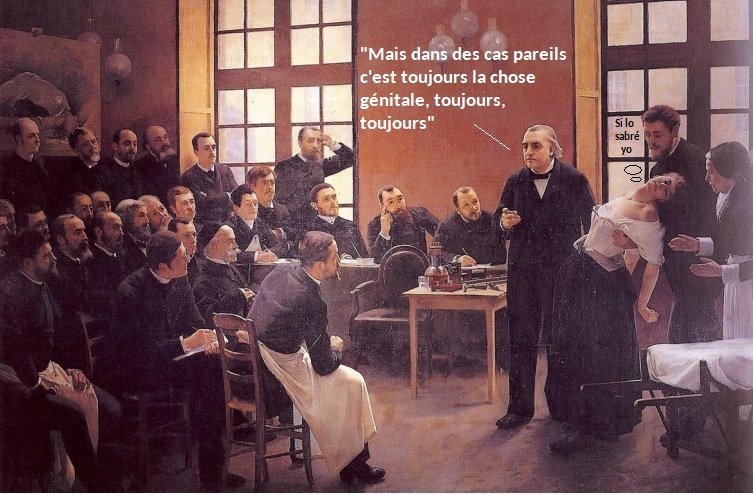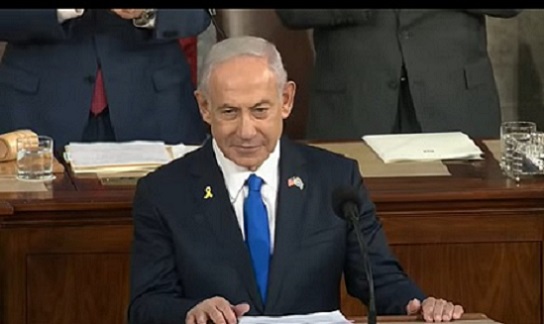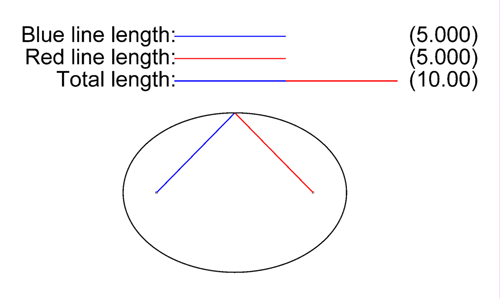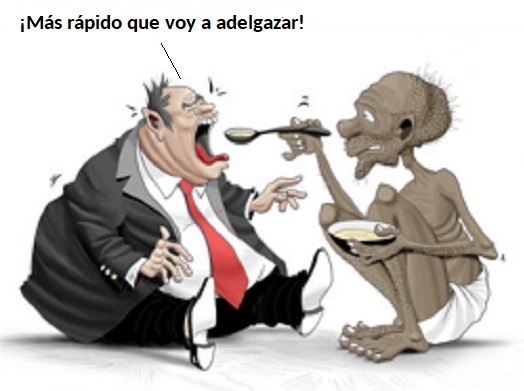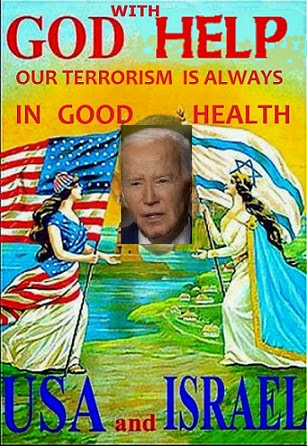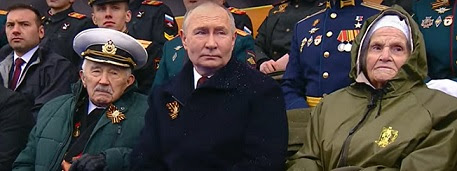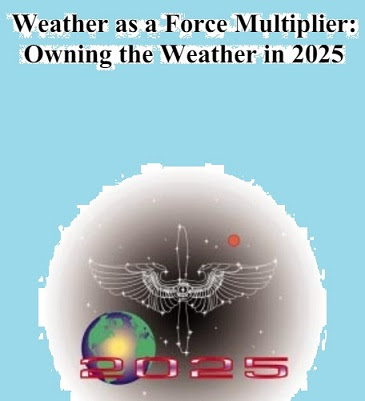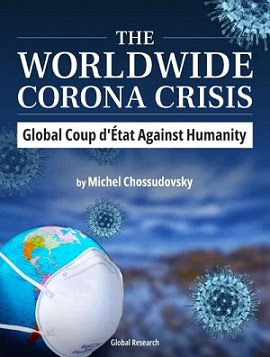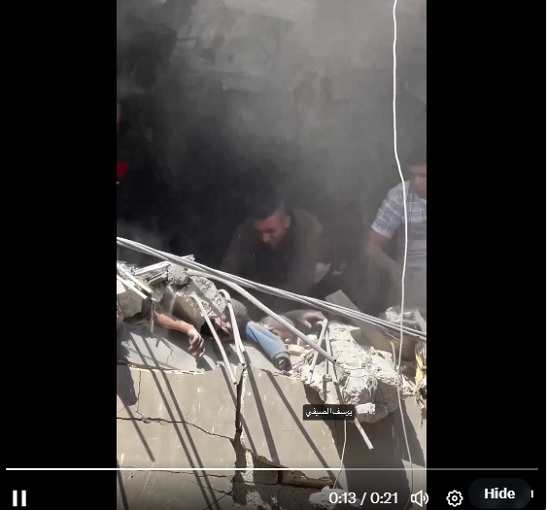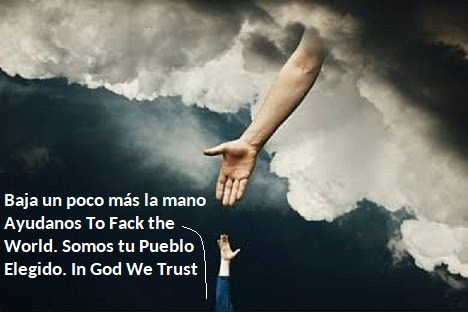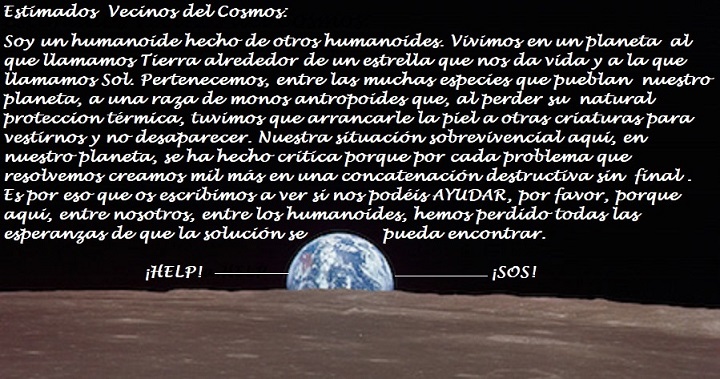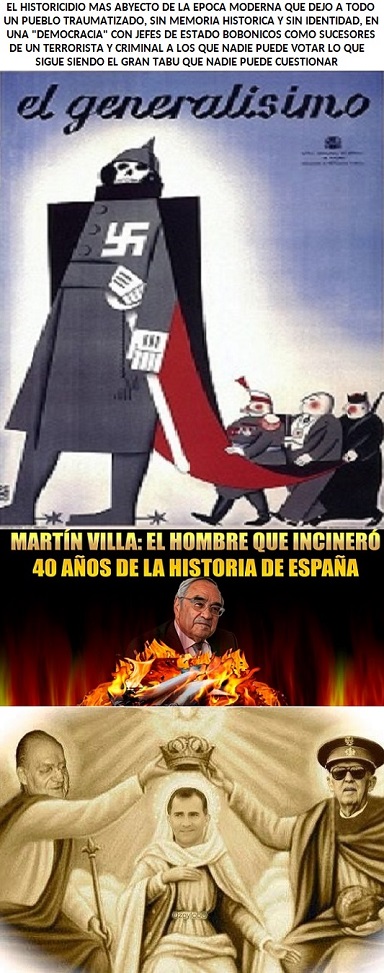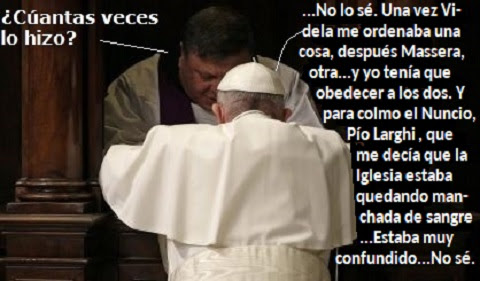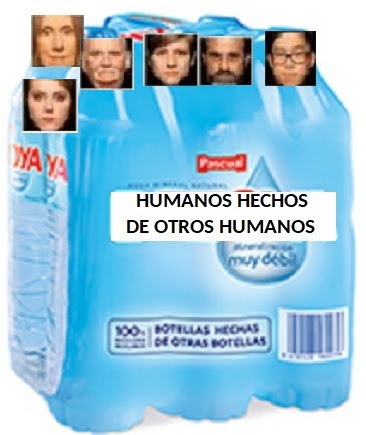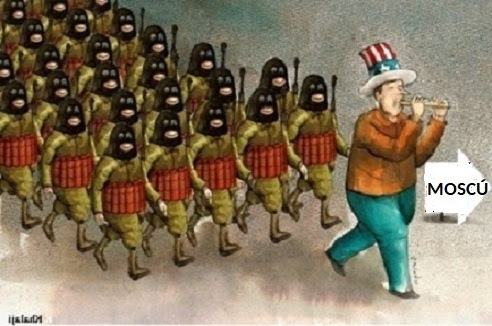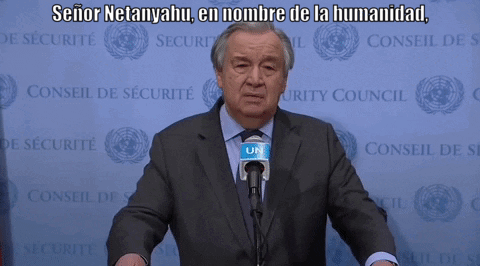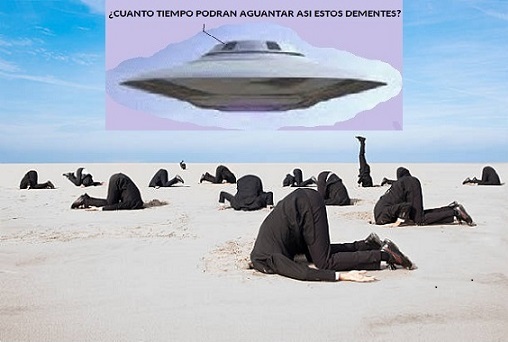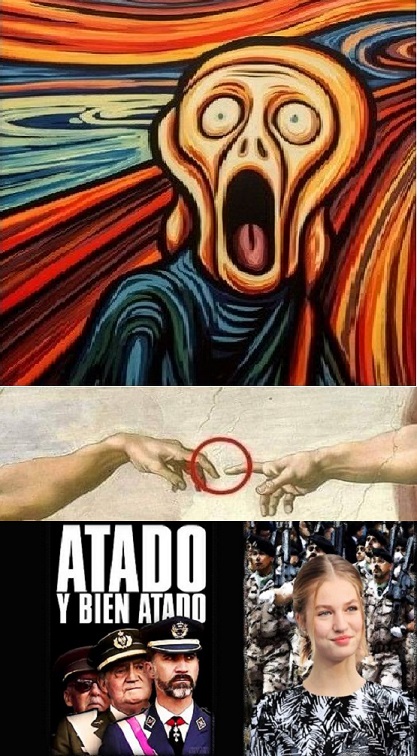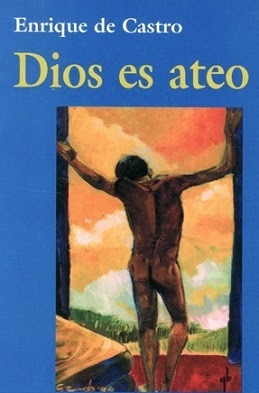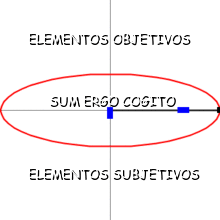 |
Las connotaciones de la lucha de clases nunca son dadas por las noticias burguesas sobre lo que ocurre en el mundo (Como si el interés privado sirviera el interés publico)
La verdad sobre Venezuela:
Una revuelta de ricos,
no una “campaña de terror”
Las imágenes forjan la realidad, lo que da a la televisión, los videos y hasta a las fotografías un poder con el que pueden cavar profundo en la mente de las personas, incluso sin que ellas se den cuenta.
Pensé que también yo era inmune a los repetitivos retratos de Venezuela como Estado fallido en medio de una rebelión popular.
Pero no estaba preparado para lo que vi en Caracas este mes: qué poco de la vida cotidiana parecía estar afectado por las protestas, la normalidad que reina en la gran mayoría de la ciudad.
También yo había sido engañado por la imaginería mediática.
Grandes medios han reportado que los pobres en Venezuela no se han unido a las protestas de la oposición de derecha, pero esto es un eufemismo: no es solamente que los pobres se abstienen – en Caracas, son casi todos excepto pocas áreas como Altamira, donde pequeños grupos de manifestantes se meten en batallas nocturnas con las fuerzas de seguridad, lanzan piedras y bombas incendiarias y corren del gas lacrimógeno.
Caminando desde el barrio de clase trabajadora Sabana Grande hasta el centro de la ciudad, no hay señales de que Venezuela esté al borde de una “crisis” que requiera la intervención de la Organización de Estados Americanos (OEA), a pesar de lo que John Kerry diga.
El Metro también trabajaba muy bien, aunque no pude bajarme en la estación Altamira, donde los "rebeldes" habían puesto su base de operaciones hasta que los sacaron esta semana.
Logré ver las barricadas por primera vez en Los Palos Grandes, área de clase alta donde los manifestantes sí tienen apoyo popular y los vecinos gritarán a cualquiera que trate de remover las barricadas – algo arriesgado de intentar (al menos cuatro personas aparentemente han sido asesinadas a tiros por hacerlo).
Pero incluso aquí en las barricadas, la vida era bastante normal, excepto por algún tráfico fuerte.
El fin de semana, el Parque del Este estaba lleno de familias y corredores sudando en un calor de 32 grados – antes de Chávez, había que pagar para entrar y los habitantes, según me dijeron, estaban decepcionados porque a los menos acomodados se les permitía entrar de gratis. Los restaurantes siguen llenos en la noche.
Viajar ayuda a verificar la realidad un poco más, por supuesto, y yo visité Caracas principalmente para obtener información en el área económica.
Pero vine escéptico respecto al cuento, reportado a diario en los medios, de que el desabastecimiento de productos básicos era la razón para las protestas.
La gente a la que la escasez le crea más molestias es, por supuesto, los pobres y las clases trabajadoras.
Pero los habitantes de Los Palos Grandes y Altamira, donde vi verdaderas protestas, tienen sirvientes que hacen cola para lo que necesitan y tienen el ingreso y el espacio para acumular algo de existencias.
Esta gente no está sufriendo – les está yendo muy bien. Sus ingresos han aumentado a buen paso desde que el gobierno de Chávez tomó control de la industria petrolera hace una década.
Incluso tienen un gran apoyo del gobierno: cualquiera con una tarjeta de crédito (excepto pobres y millones de la clase trabajadora) tiene derecho a $3.000 por año, a una tasa de cambio subsidiada.
Después, pueden vender los dólares seis veces más caros de lo que pagaron, en lo que suma un subsidio anual multimillonario en dólares para los privilegiados – y todavía estos son los que abastecen la base y a las tropas de la sedición.
La naturaleza de clase de esta lucha siempre ha sido cruda e irrefutable, ahora más que nunca.
Caminando entre las masas que fueron a las ceremonias por el aniversario de la muerte de Chávez, el 5 de marzo, se veía un mar de venezolanos de la clase trabajadora, decenas de miles de ellos.
No había ropas caras o zapatos de $ 300. Qué contraste con las masas descontentas de Los Palos Grandes, que tenían camionetas todoterreno Grand Cherokee de $ 40.000 portando el eslogan del momento: SOS VENEZUELA.
En lo que se refiere a Venezuela, John Kerry sabe de que lado de la guerra de clases está.
La semana pasada, justo cuando me iba, el Secretario de Estado de Estados Unidos duplicó su descarga de retórica contra el gobierno, acusando al presidente Nicolás Maduro de fomentar una “campaña de terror contra su propio pueblo”.
Kerry también amenazó con invocar la Carta Democrática Interamericana de la OEA contra Venezuela, así como de aplicar sanciones.
Alardear sobre la Carta Democrática contra Venezuela es casi como amenazar a Vladimir Putin con un voto de la ONU sobre la secesión en Crimea.
Quizás Kerry no se dio cuenta, pero apenas unos días antes de sus amenazas, la OEA votó una resolución que Washington introdujo contra Venezuela y le dio la vuelta, declarando la “solidaridad” del organismo regional con el gobierno de Maduro.
Veintinueve países la aprobaron y sólo los gobiernos de derecha de Panamá y Canadá se aliaron con Estados Unidos contra ella.
El artículo 21 de la Carta Democrática de la OEA aplica ante la “interrupción inconstitucional del orden democrático de un Estado miembro” (como el golpe militar de 2009 en Honduras, al cual Washington ayudó a legitimar, o el golpe militar de 2002 en Venezuela, que tuvo aún más colaboración del gobierno estadounidense).
Debido a este voto reciente, la OEA podría invocar la Carta Democrática más en contra del gobierno de Estados Unidos, por las muertes que causan sus drones a ciudadanos estadounidenses sin juicio, de lo que podría hacerlo contra Venezuela.
La retórica de “campaña de terror” de Kerry está igualmente divorciada de la realidad y como era de esperarse provocó una respuesta equivalente del canciller de Venezuela, que llamó “asesino” a Kerry.
Esta es la verdad sobre las acusaciones de Kerry: desde que comenzaron las protestas en Venezuela, resulta que más personas han muerto de la mano de los manifestantes que de las fuerzas de seguridad.
De acuerdo a las muertes reportadas por el CEPR (Centro de Investigación en Economía y Política) durante el último mes, además de los asesinados por tratar de remover las barricadas puestas por los manifestantes, por lo menos siete aparentemente han muerto debido a las obstrucciones creadas por los manifestantes – incluyendo un motorizado que se degolló con una guaya colocada en la carretera – y cinco oficiales de la Guardia Nacional han sido asesinados.
Respecto a la violencia por parte de cuerpos de seguridad, presuntamente tres personas podrían haber sido asesinadas por la Guardia Nacional u otras fuerzas de seguridad – incluyendo dos manifestantes y un activista que apoyaba al gobierno.
Algunas personas acusan al gobierno de otras tres muertes por civiles armados; en un país con un promedio de más de 65 homicidios por día, es completamente posible que esta gente actuara por su cuenta.
Un total de 21 miembros de las fuerzas de seguridad están bajo arresto por supuestos abusos, incluyendo por algunos de los asesinatos.
Esto no es una “campaña de terror”.
Al mismo tiempo, es difícil encontrar una denuncia seria sobre la violencia opositora entre los más importantes líderes de la oposición.
Según datos de encuestas, las protestas son rechazadas en gran medida en Venezuela, aunque se ven mejor afuera cuando son promovidas como “protestas pacíficas” por gente como Kerry.
Las encuestas también sugieren que la mayoría de los venezolanos ven estos disturbios como lo que son: un intento de derrocar un gobierno elegido.
La política interna de la postura de Kerry es bastante simple. Por un lado, tienes el lobby cubano-americano de la derecha de la Florida y sus aliados neoconservadores gritando a favor del derrocamiento.
A la izquierda de la extrema derecha, bueno, no hay nada. A esta Casa Blanca le importa muy poco América Latina y no hay consecuencias electorales por hacer que la mayoría de los gobiernos del hemisferio se molesten con Washington.
Quizás Kerry piensa que la economía de Venezuela colapsará y que eso llevará a algunos de los venezolanos no ricos a las calles contra el gobierno.
Pero la situación económica en realidad se está estabilizando – la inflación mensual bajó en febrero y el dolar del mercado paralelo ha bajado drásticamente ante las noticias de que el gobierno está introduciendo una nueva tasa de cambio basada en el mercado.
Los bonos soberanos de Venezuela tuvieron un rendimiento de 11,5% desde el 11 de febrero (el día que comenzaron las protestas) al 13 de marzo, el más alto rendimiento según el índice de bonos de mercados emergentes de Bloomberg.
La escasez probablemente bajará en las próximas semanas y meses.
Por supuesto, esto es exactamente el principal problema de la oposición: la próxima elección sera dentro de un año y medio y para esa fecha, la escasez económica y la inflación que han aumentado tanto en los últimos 15 meses se habrán aliviado.
En este sentido, la oposición posiblemente perderá las elecciones legislativas, así como ha perdido cada elección en los últimos 15 años.
Pero su actual estrategia insurreccional no está ayudando a su propia causa: parece que han dividido a la oposición y unido a los chavistas.
El único lugar donde la oposición parece estar ganando amplio apoyo es en Washington.
Visto en aporrea
Fuente original: The Guardian
::::::::::::::::::::::::::::::::::::::::::::::::::::::::::::::::::::::::
The truth about Venezuela: a revolt of the well-off, not a 'terror campaign'
Images forge reality, granting a power to television and video and even still photographs that can burrow deep into people’s consciousness without them even knowing it.
I thought that I, too, was immune to the repetitious portrayals of Venezuela as a failed state in the throes of a popular rebellion. But I wasn’t prepared for what I saw in Caracas this month: how little of daily life appeared to be affected by the protests, the normality that prevailed in the vast majority of the city. I, too, had been taken in by media imagery.
Major media outlets have already reported that Venezuela’s poor have not joined the right-wing opposition protests, but that is an understatement: it’s not just the poor who are abstaining – in Caracas, it’s almost everyone outside of a few rich areas like Altamira, where small groups of protesters engage in nightly battles with security forces, throwing rocks and firebombs and running from tear gas.
Walking from the working-class neighborhood of Sabana Grande to the city center, there was no sign that Venezuela is in the grip of a “crisis” that requires intervention from the Organization of American States (OAS), no matter what John Kerry tells you. The metro also ran very well, although I couldn’t get off at Alta Mira station, where the rebels had set up their base of operations until their eviction this week.
I got my first glimpse of the barricades in Los Palos Grandes, an upper-income area where the protesters do have popular support, and neighbors will yell at anyone trying to remove the barricades – which is a risky thing to attempt (at least four people have apparently been shot dead for doing so). But even here at the barricades, life was pretty much normal, save for some snarled traffic. On the weekend, the Parque del Este was full of families and runners sweating in the 90-degree heat – before Chávez, you had to pay to get in, and the residents here, I was told, were disappointed when the less well-to-do were allowed to enter for free. The restaurants are still crowded at night.
These people are not hurting – they’re doing very well. Their income has grown at a healthy pace since the Chávez government got control of the oil industry a decade ago.
They even get an expensive handout from the government: anyone with a credit card (which excludes the poor and millions of working people) is entitled to $3,000 per year at a subsidized exchange rate.
They can then sell the dollars for 6 times what they paid in what amounts to a multi-billion dollar annual subsidy for the privileged – yet it is they who are supplying the base and the troops of the rebellion.
The class nature of this fight has always been stark and inescapable, now more than ever. Walking past the crowd that showed up for the March 5 ceremonies to mark the anniversary of Chávez’s death, it was a sea of working-class Venezuelans, tens of thousands of them.
There were no expensive clothing or $300 shoes. What a contrast to the disgruntled masses of Los Palos Grandes, with $40,000 Grand Cherokee Jeeps bearing the slogan of the moment: SOS VENEZUELA.
When it comes to Venezuela, John Kerry knows which side of the class war he is on. Last week, just as I was leaving town, the US Secretary of State doubled down in his fusillade of rhetoric against the government, accusing President Nicolás Maduro of waging a “terror campaign against his own people”.
Kerry also threatened to invoke the Inter-American Democratic Charter of the OAS against Venezuela, as well as implementing sanctions.
Brandishing the Democratic Charter against Venezuela is a bit like threatening Vladimir Putin with a UN-sponsored vote on secession in Crimea. Perhaps Kerry didn’t notice, but just a few days before his threats, the OAS took a resolution that Washington brought against Venezuela and turned it inside-out, declaring the regional body’s “solidarity” with the Maduro government.
Twenty-nine countries approved it, with only the right-wing governments of Panama and Canada siding with the US against it.
Article 21 of the OAS’s Democratic Charter applies to the “unconstitutional interruption of the democratic order of a member state” (like the 2009 military coup in Honduras that Washington helped to legitimize, or the 2002 military coup in Venezuela, aided even more by the US government).
Given its recent vote, the OAS would be more likely to invoke the Democratic Charter against the US government for its drone killings of US citizens without trial, than it would be to do so against Venezuela.
According to deaths reported by CEPR in the last month, in addition to those killed for trying to remove protesters’ barricades, about seven have apparently been killed by protesters’ obstructions – including a motorcyclist beheaded by a wire stretched across the road – and five National Guard officers have been killed.
As for violence from law enforcement, at least three people appear to have been killed by the National Guard or other security forces – including two protesters and a pro-government activist.
Some people blame the government for an additional three killings by armed civilians; in a country with an average of more than 65 homicides per day, it is entirely possible these people acted on their own.
A full 21 members of the security forces are under arrest for alleged abuses, including some of the killings. This is no “terror campaign”.
At the same time, it is difficult to find any serious denunciation of opposition violence from major opposition leaders. Polling data finds the protests to be deeply unpopular in Venezuela, although they do much better abroad when they are promoted as “peaceful protests” by people like Kerry.
The data also suggest that a majority of Venezuelans see these disturbances for what they are: an attempt to remove the elected government from power.
The domestic politics of Kerry’s posturing are pretty simple. On the one hand, you have the right-wing Florida Cuban-American lobby and their neo-conservative allies screaming for overthrow. To the left of the far right there is, well, nothing. This White House cares very little about Latin America, and there are no electoral consequences for making most of the governments in the hemisphere more disgusted with Washington.
Perhaps Kerry thinks the Venezuelan economy is going to collapse and that will bring some of the non-rich Venezuelans into the streets against the government. But the economic situation is actually stabilizing – monthly inflation fell in February, and the black-market dollar has fallen sharply on the news that the government is introducing a new, market-based exchange rate.
Venezuela’s sovereign bonds returned 11.5% from 11 February (the day before the protests began) to 13 March, the highest returns in the Bloomberg dollar emerging market bond index. Shortages will most likely ease in the coming weeks and months.
Of course, that is exactly the opposition’s main problem: the next election is a year-and-a-half away, and by that time, it’s likely that the economic shortages and inflation that have so increased over the past 15 months will have abated.
The opposition will then probably lose the parliamentary elections, as they have lost every election over the past 15 years. But their current insurrectionary strategy isn’t helping their own cause: it seems to have divided the opposition and united the Chavistas.
The only place where the opposition seems to be garnering broad support is Washington.
































































































































































































